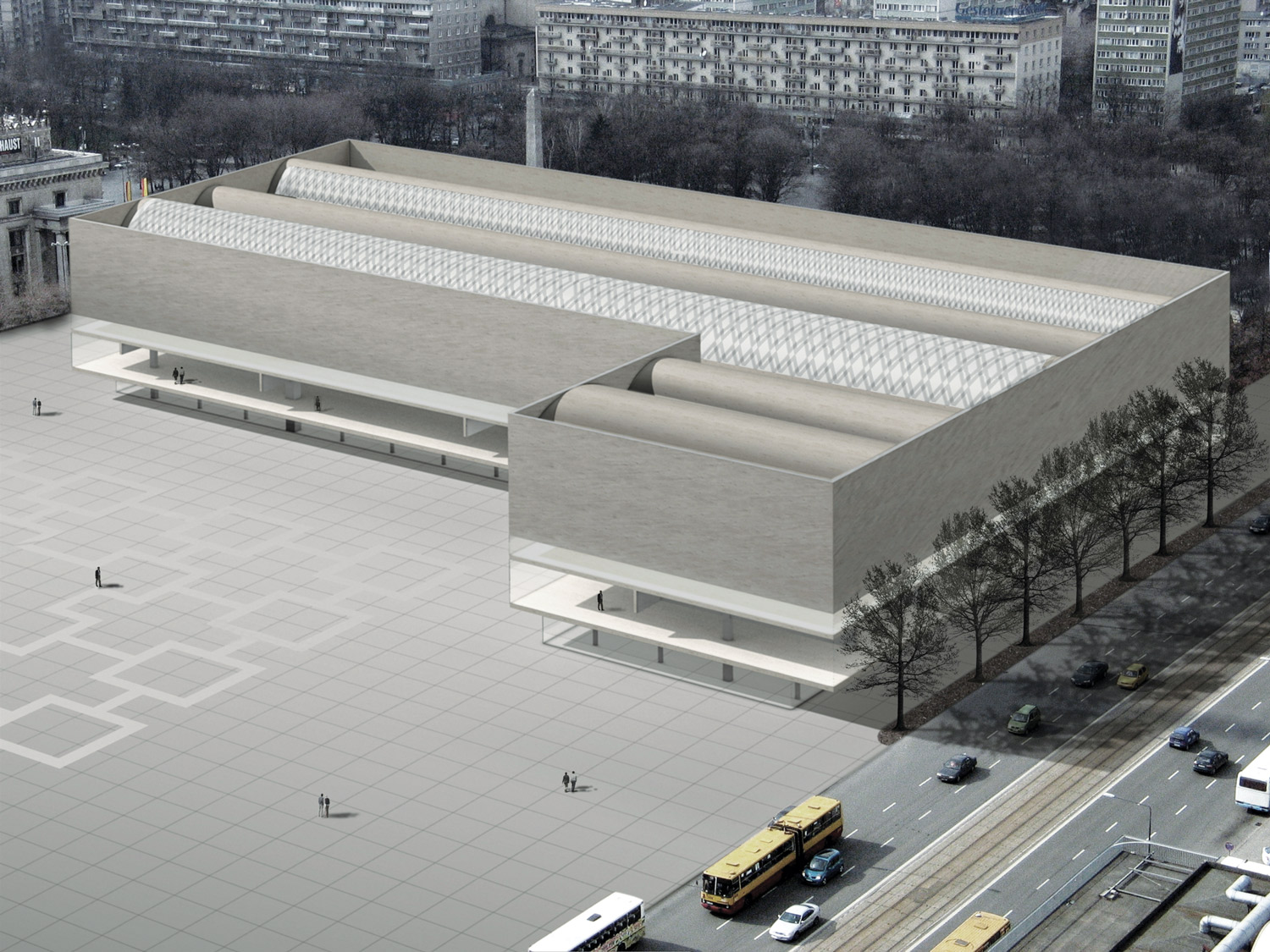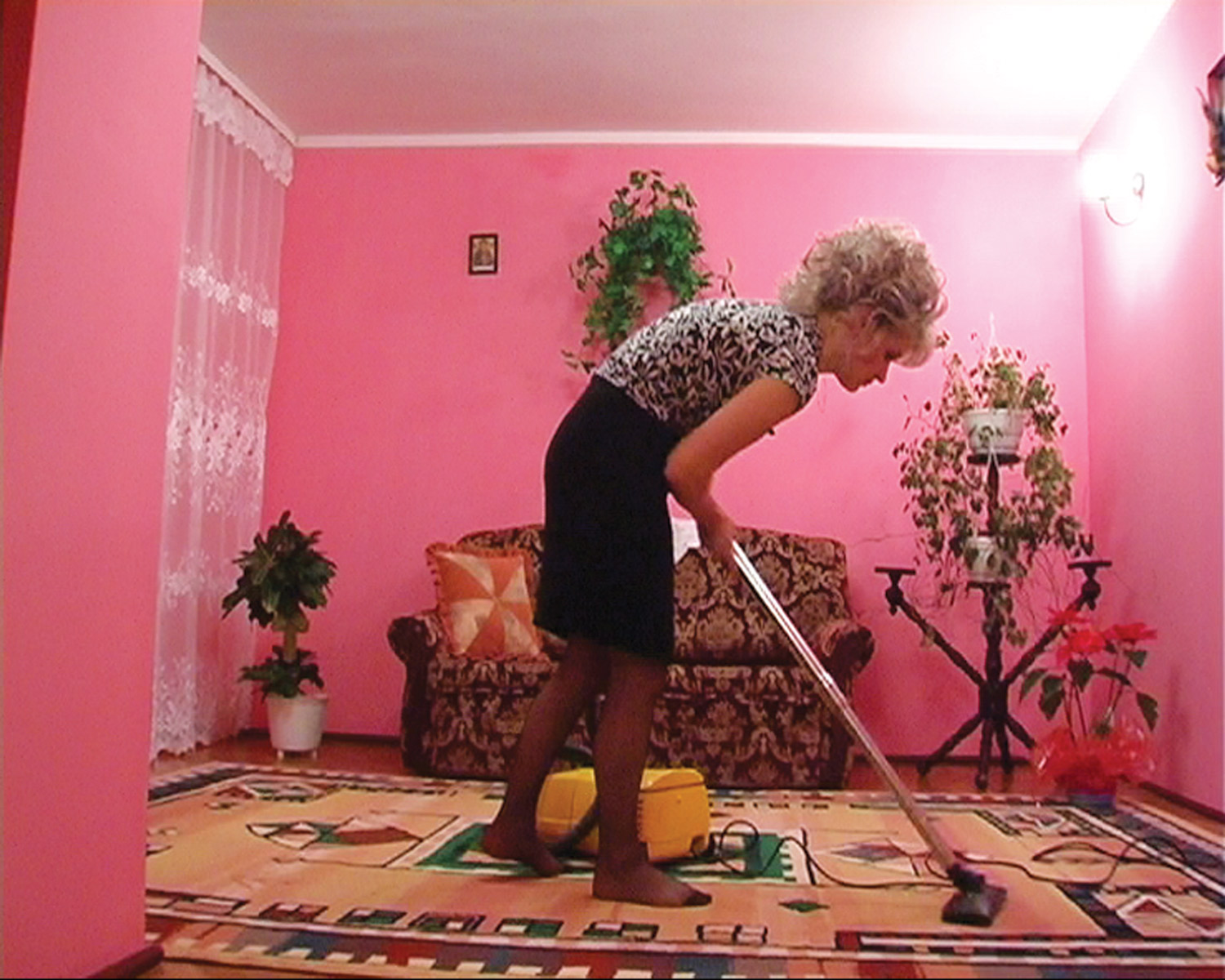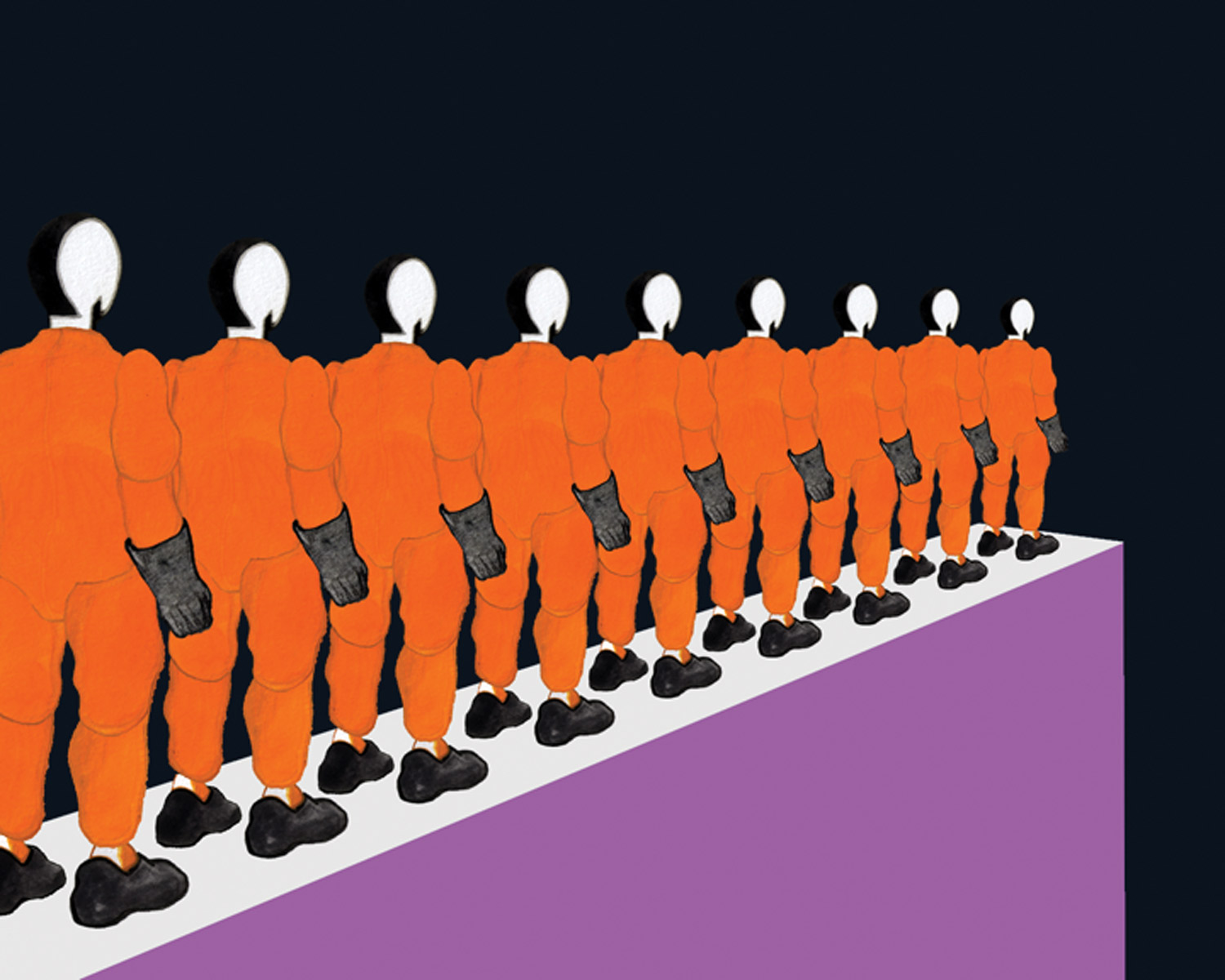
Nine o’clock in the morning and I meet Ferran Adrià inside the Sagrada Familia. He tells me that he loves to visit it at least once a year and would like to do the first part of the interview here.
Maurizio Cattelan: Ferran, today when you got up and looked in the mirror, what came to your mind about the chef Ferran Adrià?
Ferran Adrià: Certainly that I’m lucky to do something I like, with all the good and bad moments, and that my motivation is to know what are the limits in what I do.
MC: Aren’t you tired of Ferran Adrià?
FA: Well, I’m not tired of Ferran Adrià the chef. Sometimes I get tired of Ferran Adrià the character, but I have this principle: not to worry about the things you are not able to change, and right now I cannot change the things I dislike about myself as a character.
MC: How do you think Gaudí would have considered your cuisine?
FA: I don’t know. The truth is that someone in the vanguard in a specific field may not be interested in the vanguard within other fields.
We have a tour inside the Sagrada Familia and I have this feeling of being on another planet.
MC: Ferran, can you imagine a world where eating is not necessary?
FA: Wow, there would be no reason for cookery. I must start from the principle that vanguard cuisine comes from the need to feed. And this is the big difference in relation to the other artistic fields. It would be amazing to live on a planet where eating was just about emotions.
Once the genius of Gaudí has penetrated our souls, Ferran asks me to go with him to El Taller de Puertaferrisa where, for six months a year — this year nine because elBulli has changed its opening time — he creates what constitutes the creative skeleton of elBulli.

MC: Is creativity valued as a component in cuisine?
FA: Not in a restaurant. Within the same category, a restaurant isn’t more expensive just because it is more creative. I mean, it’s not a plus. Not today, but maybe things will change in the future.
MC: Does the role of the dealer or the gallerist exist within the world of gastronomy?
FA: That could be the case when chefs have their restaurants inside hotels — in this case the hotel could be considered the gallery and would act as such. When a chef runs his own business he can create and sell his work without intermediaries. For a creative professional this is wonderful, while the role of the dealer relates more to the case in which the business is outer. There you have an “agent” or “consultant.”
MC: Does this mean that you are totally free from the moment you create to when you are actually at work?
FA: Vanguard cuisine is not about making money, so you have other sources of income giving you the freedom you need, or you would have to close the business down. For those who, me included, are lucky enough to have found other ways to make money, vanguard cuisine is one of the practices with more freedom.
MC: Is your creative ego fulfilled?
FA: It was not my intention to become a chef nor to dedicate myself to creativity, and that’s why everything I have obtained in this sense is a gift. For a creative person this is essential if you want to keep a positive attitude towards your work and your life.
I walk through El Taller and I see a drawing by Matt Groening with Ferran as a Simpsons character. It’s the cover of the book Comer para pensar, pensar para comer (Food for Thought, Thought for Food) written by Vicente Todolí and Richard Hamilton.

MC: Ferran, what does this book mean to you?
FA: Without doubt it is the best gift I have received in my whole life. Two people like Vicente and Richard have dedicated a year and a half of their lives to write a book explaining what cuisine is, as a language, and its possible dialogue with art. It makes this book an icon for the entire world of gastronomy.
MC: Will I be able, through this book, to understand elBulli and your work?
FA: This book particularly helps understand that the interesting thing in vanguard cuisine is not the backstage as many people belonging to this world believe. What is really important is the final result, the emotions experienced by the people eating in these sort of restaurants. If someone wants to understand the work involved, the best way to study it for that purpose is elBulli’s General Catalogue.
MC: Ferran, can you name a Bulgarian dish, please?
FA: I have no idea, but I do not know Bulgarian either. Gastronomy is an infinite language, very complex, and to know everything is impossible. Chefs just have a little bit more knowledge in cuisine than the rest of the people.
MC: How do you create a new dish?
FA: Very simple. You have an idea, develop it and, if it works, you create a new dish. The difficult thing is to get the idea. It is something you cannot learn. Everything else can be learnt.
MC: Can you briefly define your cuisine?
FA: We seek emotions through something new, but if you want to know more in depth about our cuisine’s elements, on elBulli’s website there is a synthesis of our cuisine which, in 23 points, explains very well elBulli‘s practice.
2 p.m. and Ferran invites me to have lunch at the Japanese restaurant Koy Shunka, where he says his friend Hideki cooks the best sushi in Western countries.
MC: Ferran why did you take me to this restaurant?
FA: Do you know what interests me about food? The nourishment of the soul. And this is what happens when I come to this restaurant.
MC: Is it important to you that your cuisine is loved?
FA: I want people to get emotional with what we do. And not only by means of its sensorial aspect; provocation, irony and humor play an important role within the emotional experience.
By this point nigiri sushi were served and Ferran explains to me that something as simple as a ball of rice with a cut of fish or shellfish can be so different as to change from good to magical: rice quality and its cooking, the cut of the fish and, most importantly, the equation of temperature between rice and fish and the time you take to eat them.
Oh, and you never have to add sauces because the chef has already provide it.
To Ferran, nigiri sushi are alive, ephemeral sculptures he confronts every time he comes to this restaurant.

MC: Ferran, what do you think about Japanese food?
FA: I went to Japan for the first time in 2002 and without doubt it has hugely influenced my career. Japan is another planet. Very different cuisine, and very different culture. There are no tablecloths or covers. There is no wine or bread. Everything is very different from our approach to food; but what I’m most interested in is the feeling. When they are cooking there’s something you cannot see, you can only feel it. To me, this is the difference between Japanese and Western cuisine.
MC: What do you mean? Didn’t you understand their cuisine while you were there?
FA: Exactly, I didn’t understand and I believe I never will. Because you need to live over there quite a while to get to know their culture. The only thing I want when I’m in Japan is to get strong emotions.
MC: Do you care about the polemic over your work?
FA: Not at all, even if I do understand the fact that where there is a vanguard there is also an anti-vanguard, and you will have to live with that for all your life.
MC: Even if you think of yourself just as a chef and nothing else?
FA: Yes, I’m a chef, but my work can have consequences even outside the gastronomy world. Yet, there is no way for us to control it.
MC: After your experience in Documenta 12, what do you think about the art world today?
FA: The same as for cuisine: you have a little of everything in there. But in the end you need to pay attention only to the things you find positive. In this case, it was quite important to me to discover the sensibility surrounding the art world.
After an hour tasting sushi, we get back to el Taller, and I will be a mere spectator while Ferran and his team create.
At 7:30 p.m., we went to Inopia, a tapas bar in the L’Eixample district, where we’re about to end our journey. During the taxi ride I make my last question.
MC: Ferran, aren’t you fed up with making excuses for what you do?
FA: Yes, a little. But on the other hand the divulgation of our work at elBulli is very important; as a cuisine packed with references, it sometimes needs to be explained.





